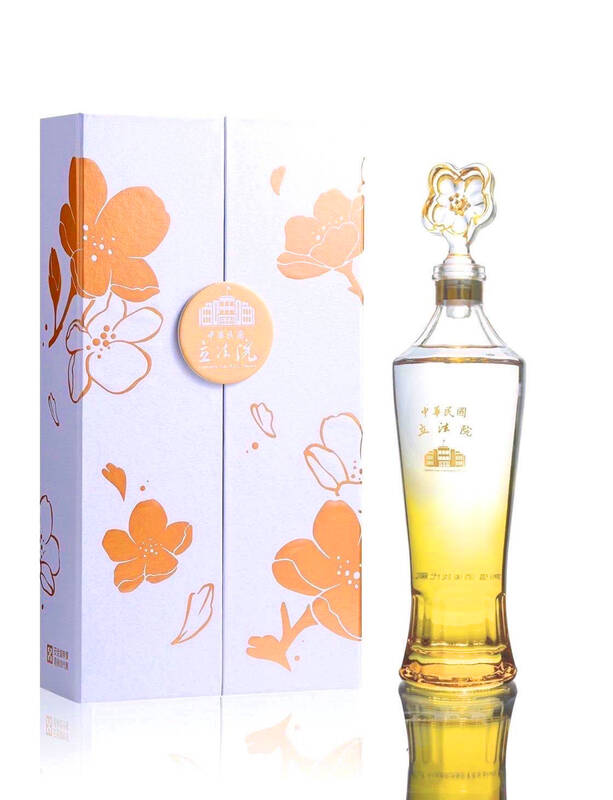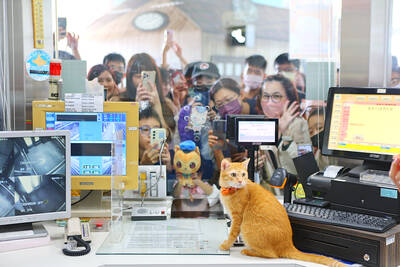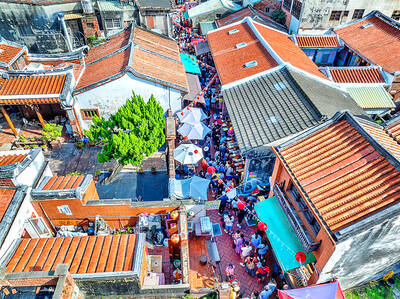The Legislative Yuan yesterday unveiled a new commemorative liquor and bottle design which would be used for public relations and parliamentary exchanges.
The commemorative liquor is used as a gift in official affairs and for feasts, with the liquor bottle redesigned every two terms, a source in the legislature said.
The new glass bottle, which replaces the ceramic bottle, is stamped with the words “Legislative Yuan, Republic of China” and a motif of the Legislative Yuan building delineated in an elegant golden outline. The lid features a handmade crystal plum blossom outlined in gold, the floral emblem of Taiwan, which stands for purity and strength.

Photo courtesy of the Legislative Yuan via CNA Warning: Excessive consumption of alcohol can damage your health
It is a Kinmen kaoliang liquor that was produced via pure-grain solid state fermentation and aged over five years in a granite tunnel before being bottled, and bears a rich fragrance and sweet taste, the statement said.
The use of a clear bottle symbolizes “public opinion being embraced” by the “pure heart” of lawmakers, while the combination of the plum blossom and the liquor is the connection between the world and people, it said.
It is available for lawmakers to buy, with a maximum limit of 30 boxes — six bottles per box — per person every year.
The first batch of 1,200 bottles is to be released before the Mid-Autumn Festival on Tuesday next week, and more would be mass-produced starting next month for use as a special gift for official legislative exchanges.

A cat named Mikan (蜜柑) has brought in revenue of more than NT$10 million (US$305,390) for the Kaohsiung MRT last year. Mikan, born on April 4, 2020, was a stray cat before being adopted by personnel of Kaohsiung MRT’s Ciaotou Sugar Refinery Station. Mikan was named after a Japanese term for mandarin orange due to his color and because he looks like an orange when curled up. He was named “station master” of Ciaotou Sugar Refinery Station in September 2020, and has since become famous. With Kaohsiung MRT’s branding, along with the release of a set of cultural and creative products, station master Mikan

RISING TOURISM: A survey showed that tourist visits increased by 35 percent last year, while newly created attractions contributed almost half of the growth Changhua County’s Lukang Old Street (鹿港老街) and its surrounding historical area clinched first place among Taiwan’s most successful tourist attractions last year, while no location in eastern Taiwan achieved a spot in the top 20 list, the Tourism Administration said. The listing was created by the Tourism Administration’s Forward-looking Tourism Policy Research office. Last year, the Lukang Old Street and its surrounding area had 17.3 million visitors, more than the 16 million visitors for the Wenhua Road Night Market (文化路夜市) in Chiayi City and 14.5 million visitors at Tainan’s Anping (安平) historical area, it said. The Taipei 101 skyscraper and its environs —

Taiwan on Friday said a New Zealand hamburger restaurant has apologized for a racist remark to a Taiwanese customer after reports that it had first apologized to China sparked outrage in Taiwan. An image posted on Threads by a Taiwanese who ate at Fergburger in Queenstown showed that their receipt dated Sunday last week included the words “Ching Chang,” a racial slur. The Chinese Consulate-General in Christchurch in a statement on Thursday said it had received and accepted an apology from the restaurant over the incident. The comment triggered an online furor among Taiwanese who saw it as an insult to the

ENROLLMENT STRATEGIES: NTNU focuses on English instruction to attract foreign students, and helps them with employment and internships, its president said The number of foreign students in the nation’s colleges and universities hit a five-year high last year, with National Taiwan Normal University (NTNU) topping the list with the most international students, Ministry of Education data showed. Last year, 123,188 international students attended Taiwanese colleges and universities, 3,259 more than the previous academic year, the data showed. NTNU had the most international students, with 7,648 students, followed by the National Taiwan University’s 6,249, it showed. NTNU yesterday said that international students accounted for 12.05 percent of its degree students last year. The percentage of overseas Chinese students at the university has also been the highest